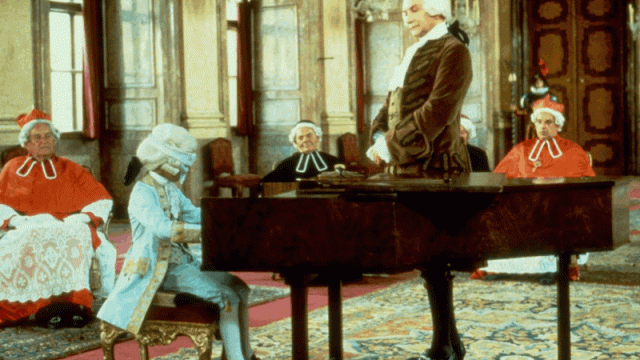The modern piano evolved rapidly in the first 150 years after its invention, but it is now so good acoustically that it probably won’t change much more in the future.
That’s the conclusion of acoustician Nicholas Giordano, dean of Auburn University’s College of Sciences and Mathematics in Alabama. He described his work last month at a meeting of the Acoustical Society of America in Jacksonville, Florida.
Giordano’s interest in the instrument dates back to first learning how to play piano as an adult, when his teacher introduced him to Baroque composers like Bach. Giordano decided to build his own harpsichord so he could play Bach on a period instrument, thereby experiencing what the music sounded like in the composer’s era. He enjoyed the project so much that he kept at it, acquiring early pianos and rebuilding them in his spare time. His collection now numbers 21 instruments, the oldest of which is a close relative to the harpsichord, the bentside spinet, dating back to 1703 (when Bach was just a teenager).
That experience has given him valuable insight into how the instrument has evolved from its earliest days.
Bartolomeo Cristofori, instrument maker to the Medici family in Florence, Italy, built the first piano 300 years ago. It was very similar to the harpsichord, except with a harpsichord the strings are plucked (like a guitar), and with the piano the strings are struck with a hammer. Christofori figured out how to control how hard the player could press the key, thereby varying the volume of each tone.
Instrument makers spent the next three centuries improving on this design. According to Giordano, the earliest pianos only had 49 notes, covering four octaves. It was good enough for Bach and his contemporaries, but Mozart might have found that range a bit too limiting; by his time, the range had expanded to five octaves.
By the time Beethoven rolled around in the early 1800s, he had a full six octaves (73 notes) to work with, and piano makers had also added the ability of vary the loudness of notes. The pianos of Beethoven’s era also had sturdier construction and higher string tension; Giordano told Gizmodo that these innovations “led to expressive possibilities not possible within the harpsichord to organ.” (You can listen to audio clips of a Mozart sonata being played on an old vs. modern piano here.)
Later composers like Brahms and Rachmaninoff composed for pianos “powerful enough to play with a full modern orchestra.” In addition, the modern piano design also has better “action” than those earliest instruments — that’s the mechanism that connects the key level to the hammer, which strikes the strings. It’s faster and more responsive today, which means the performer has much greater tonal control, further enhancing the expressive possibilities. Louder sounds meant more reverberation, and led to stronger cases: metal plates are now added to strengthen the case.
Modern pianos have seven octaves (plus a minor third, for a total of 88 notes), and that’s where it’s stayed for the last 150 years, even though the human ear is sensitive to a much wider range of frequencies than those covered by the piano’s keys. Giordano thinks this is because of how human beings perceive notes beyond the piano’s range. Below that range, most people hear the notes as decidedly un-musical clicks. Above the piano’s range, we can’t pick up combinations of two or more notes to form chords.
So have we reached “peak acoustics” in piano design? Giordano thinks this might be the case. Granted, piano makers still tinker with making the action more responsive, or adjusting the spacing of the ribs in the soundboard to improve sound quality and tailor instruments for specific musical styles. But these are incremental improvements. Giordano doesn’t see another major innovation in the instrument in the future.
“I am told that some modern and high-end electronic keyboards have the ability to make their case vibrate in the same way that the case of a modern piano vibrates, so as to give the player [a similar] feel as with the acoustic piano,” he said. “They do this even though it has absolutely nothing to do with producing the sound. This tells me that people want their pianos — even the electronic ones — to be just like our ‘ideal’ acoustic ones.”
In other words, why try to fix what isn’t broken?
That said, Giordano would be the first to admit that he could be wrong, noting the perilous nature of making predictions. Case in point: when player pianos first appeared in the 1800s, some folks predicted they would prove wildly popular with composers, since it meant they could compose beyond the limits of the ten fingers on a player’s hands. As Giordano dryly observed, “History shows that composers did not jump to this possibility.”
[Giordano, Nicholas. (2015) “Evolution of the Piano,” Session 4pMU5. 170th Acoustical Society of American meeting, Jacksonville, Florida.]
[Via Acoustical Society of America]
Images: (top) Still from Amadeus (1984). (middle) Piano built by Bartolomeo Cristofori in 1722. Credit: LPLT/Wikimedia Commons. (bottom) Giordano’s own Steinway model M modern piano. Photo by Lizz Giordano.
